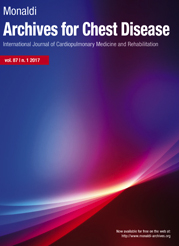Sonographic diaphragmatic parameters as a predictor of weaning failure in critically ill patients in need of invasive mechanical ventilation: a prospective observational cohort study
All claims expressed in this article are solely those of the authors and do not necessarily represent those of their affiliated organizations, or those of the publisher, the editors and the reviewers. Any product that may be evaluated in this article or claim that may be made by its manufacturer is not guaranteed or endorsed by the publisher.
Authors
Weaning from invasive mechanical ventilation is difficult in critically ill patients, with diaphragmatic dysfunction being a key factor. This prospective observational study aimed to estimate key sonographic diaphragmatic parameters—thickness, thickening fraction, and excursion—in critically ill patients needing invasive mechanical ventilation and evaluate their association with weaning from mechanical ventilation. Over 18 months, adult patients needing mechanical ventilation were studied in a tertiary care hospital’s medical intensive care unit. Besides the demographic and clinical parameters, the sonographic diaphragmatic thickness, thickening fraction, and excursion (DE) were measured via ultrasound at two points: before intubation and at the first spontaneous breathing trial. Patients were followed for 28 days after recruitment in the study to determine weaning outcomes, which were classified as simple or complicated (which included both difficult and prolonged). The baseline diaphragmatic parameters were compared between the outcome groups to determine clinically significant predictors of simple weaning. Out of the 70 patients enrolled in the study, final analysis was possible for 50 of them. Weaning was simple and complicated in 30 and 20 patients, respectively. DE was significant in predicting simple versus complicated weaning (p<0.001). The receiver operating characteristic curve displayed the cut-off of 10.5 mm with an area under the curve of 0.986 (95% confidence interval: 0.903-1.000), with p<0.0001. The test demonstrated a sensitivity of 96.77% and a specificity of 100%. Patients with pre-intubation DE<10.5 mm needed more days for weaning [median (interquartile) range of 8 (7-40)] and intensive care [16.50 (10-50)] as compared to those with DE>10.5 mm [4 (2-40)] and 8.50 (5-52)], which was significant with p<0.001. In conclusion, pre-intubation sonographic DE of less than 10.5 mm can effectively predict complicated weaning and may be an adjunct in prognostication.
Ethics approval
The study protocol was approved by the Institutional Human Ethics Committee- Post Graduate Research (IHEC-PGR) of All India Institute of Medical Sciences, Bhopal. The study approval number is IHEC- PGR/2021/PG/Jan/04 dated 21/08/28. The committee assessed the planned project as ethically unobjectionable.How to Cite

This work is licensed under a Creative Commons Attribution-NonCommercial 4.0 International License.






